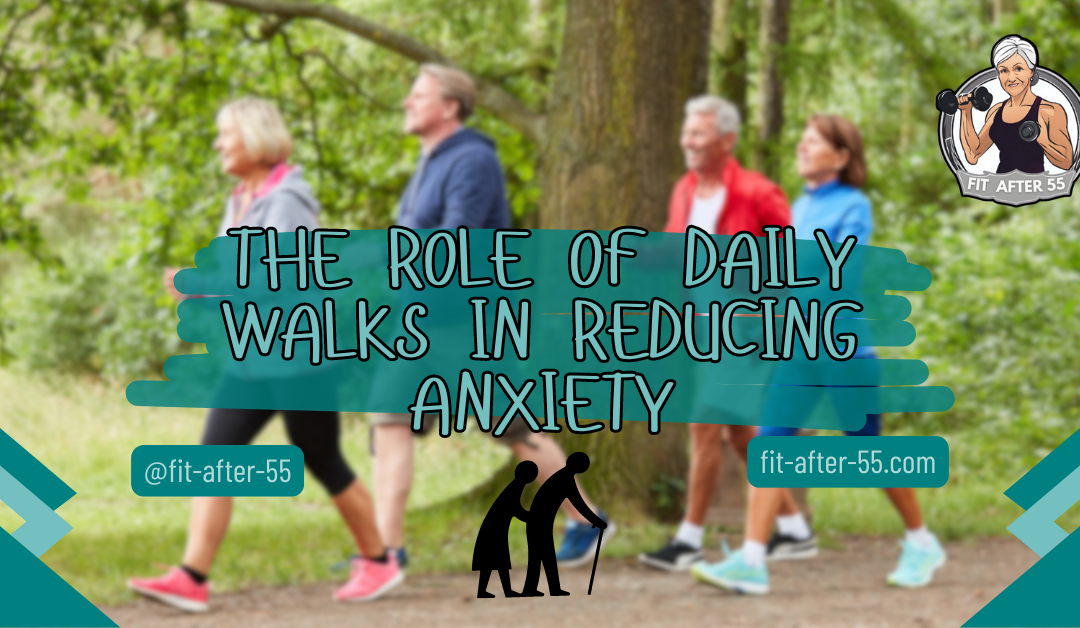In an age where anxiety often feels like an unwelcome companion, finding effective ways to manage it is more important than ever. Enter the simple yet powerful act of walking. What if the key to the role of daily walks in reducing anxiety lies not in complicated therapies or medications but in the rhythmic movement of your own two feet? Daily walks offer more than just a change of scenery; they provide a natural remedy that can significantly impact mental well-being.
Research shows regular walking can lower stress levels, improve mood, and enhance mental clarity. This article delves into the science behind walking as a therapeutic tool, exploring how a brisk stroll can serve as a sanctuary amidst life’s chaos. Whether you’re a seasoned walker or considering your first steps, discover how daily walks can pave the way to a calmer, more centered mind.
Finding Calm on Foot: The Impact of Daily Walks on Anxiety

Physical activity isn’t about staying in shape or shedding a few pounds. The role of daily walks in reducing anxiety has an incredible impact on our mental health as well. Ever notice how a brisk walk can clear your mind after a stressful day? There’s more to it than just a physical workout—it’s helping your brain, too. Scientific studies have shown a strong link between regular physical activity and improved mental health.
The benefits are significant even when the exercise is as simple as walking. When it comes to walking, it’s not about how fast or how far you go but about making it a regular habit. Walking helps to ease tension, promote relaxation, and improve mood. Let’s look at some stats. Studies suggest that those who engage in regular physical activities experience lower levels of anxiety and depression symptoms. Walking is a low-impact, accessible way to give your mind the break it needs.
Imagine this: regular walks can boost your mental well-being and help build resiliency against future stress. The steady rhythm of walking and fresh air provide a reset button for your stressed-out mind. As a part of the broader spectrum of exercise, walking represents a safe starting point for anyone looking to improve their mental health. It’s simple, requires no fancy equipment, and almost everyone can do it. So, your brain reaps the rewards whether you’re strolling through a busy city or a quiet park.
Key Highlights
- Daily walks help regulate stress hormones, particularly cortisol, which can contribute to feelings of anxiety. This natural remedy can lower anxiety levels and create a more balanced emotional state.
- Regular walking stimulates the release of endorphins, the body’s natural mood lifters. This chemical boost promotes happiness and relaxation, making it an effective tool for combating anxiety.
- Walking increases blood flow to the brain, improving cognitive performance and mood regulation. This benefit is particularly important for individuals experiencing anxiety, as it leads to better focus and a calmer mind.
- Regular walking supports neuroplasticity, the brain’s ability to adapt and change. This adaptability helps individuals become more resilient to stress, making it easier to handle life’s challenges.
- Incorporating mindfulness into walking can transform the experience, fostering mental clarity and a sense of peace. By tuning into the environment and focusing on the present moment, individuals can alleviate anxiety and cultivate a more grounded mindset.
The Science of Walking: How Daily Walks Alleviate Anxiety
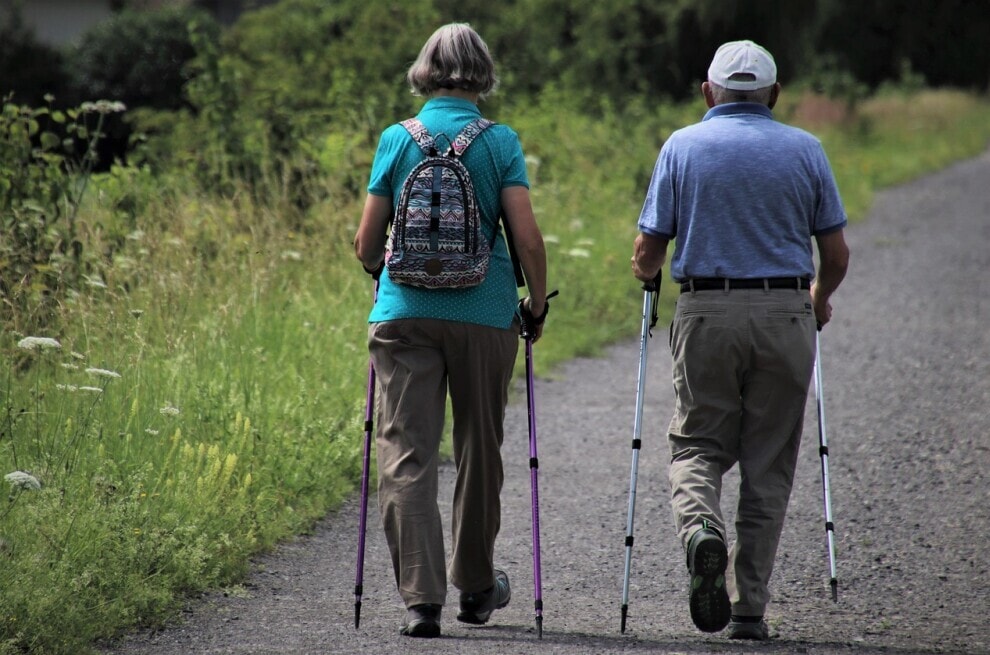
Walking does more than just give your legs a workout. It kickstarts a series of wonderful changes in your body and mind, especially when anxiety levels skyrocket. This is where the role of daily walks in reducing anxiety becomes evident. Walking, your body starts to regulate its stress hormones, cortisol, critical in stress responses. Lowering high cortisol levels can help keep anxiety at bay, and walking is your go-to natural remedy.
Endorphin Boost
Then there’s the endorphin boost. These are your body’s natural mood lifters. As you pick up your walking pace, your brain releases endorphins, which are the key to feeling happier and more relaxed. Those lovely moments when your mood lifts after a walk? Thank your endorphins for that!
Brain Function
Walking also aids brain function. A stroll increases blood flow to the brain, improving its performance and helping with mood regulation. This is great news for those grappling with anxiety, as it means better focus and a calmer mind.
Neuroplasticity
Alongside other benefits, walking improves neuroplasticity – the brain’s ability to adapt and change, a crucial factor in managing anxiety. Walking regularly makes your brain more resilient to stress and adapts better to life’s ups and downs. It’s like giving your mind a workout and conditioning session all in one go.
Consider this: a few laps around your neighborhood can set the stage for a calmer, more centered you. Walking is a small step with big-time mental rewards.
Real-life Benefits: Testimonials and Success Stories
Hearing from people who have found relief from anxiety through walking brings theory to life. Take Jane, for example, who was battling anxious thoughts every day. After she committed to The Role of Daily Walks in Reducing Anxiety through a daily evening walk, she gained physical endurance and emotional strength. Her walks became a routine that provided mental clarity and peace, helping her manage anxiety better.
Then, there’s Mike, who used to dread mornings due to high anxiety levels. Starting his day with a brisk walk around the park flipped the switch for him. The fresh air and rhythmic strides set a positive tone for his day, making his anxiety more manageable. Walking experiences can vary based on where you’re walking. Strolling through a vibrant city can offer an exhilarating pulse while walking in nature can provide a soothing backdrop. Both environments offer unique benefits, catering to different anxiety needs.
Community walking groups often form wonderful support networks. People find connection and support, sharing their experiences and encouraging each other. These groups can transform a solo exercise into a shared journey of overcoming anxiety. Hearing these stories can inspire others to step outside and see what a daily walk can do. Everyone’s path might look different, but the goal remains: finding peace and reducing anxiety.
Other Benefits of Walking
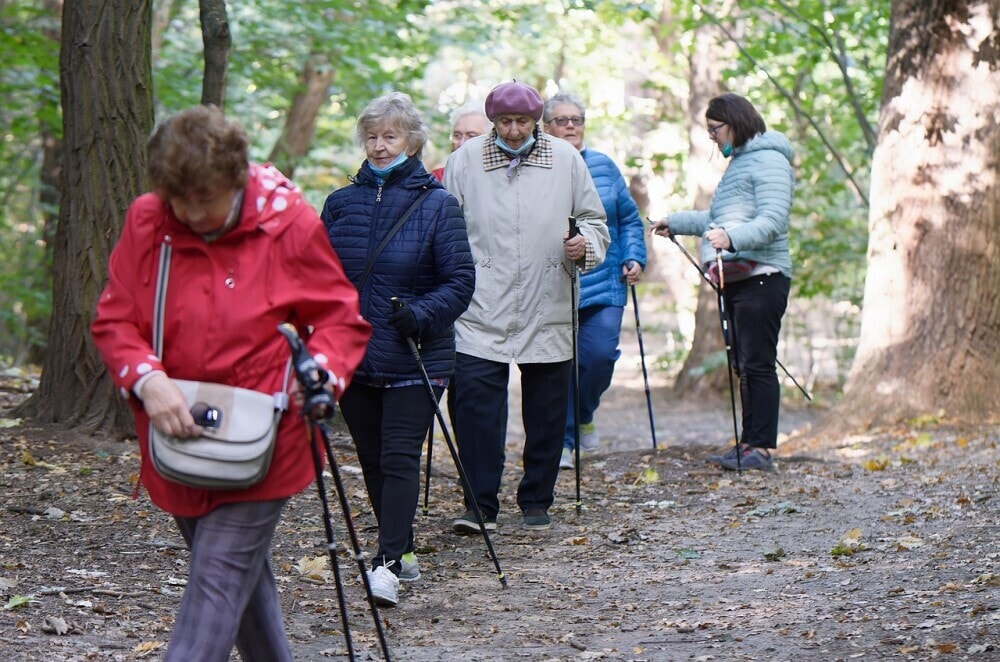
Walking is a straightforward, accessible, and highly effective exercise with many health benefits, particularly in The Role of Daily Walks in Reducing Anxiety. Here are some of the key advantages of adding walking to your daily routine:
Cardiovascular Health
- Enhanced Heart Health: Regular walking strengthens the heart muscle, lowering the risk of heart disease, stroke, and high blood pressure.
- Lower Cholesterol Levels: Walking can decrease LDL (bad) cholesterol while boosting HDL (good) cholesterol levels.
- Improved Blood Circulation: Walking enhances blood flow throughout the body, contributing to overall vitality and health.
Weight Management
- Calorie Burning: Walking is an excellent way to burn calories and maintain a healthy weight.
- Reduced Body Fat: Consistent walking can help decrease body fat, particularly around the waist.
- Boosted Metabolism: Walking can elevate your metabolism, allowing you to burn more calories even at rest.
Physical Health
- Stronger Bones: As a weight-bearing exercise, walking helps fortify bones and lower the risk of osteoporosis.
- Improved Balance and Coordination: Walking enhances balance and coordination, reducing the likelihood of falls.
- Increased Energy Levels: Regular walking can boost your energy and reduce feelings of fatigue.
Social Benefits
- Social Connections: Walking with friends or family offers a great opportunity to socialize and strengthen relationships.
- Community Engagement: Many communities organize walking groups and events, providing chances to meet new people and get involved in local activities.
Did you Know?
Even brief walks can provide substantial health benefits. Strive for a minimum of 30 minutes of moderate-intensity walking on most days of the week. As your fitness improves, you can gradually extend the duration and intensity of your walks.
The Role Of Daily Walks In Reducing Anxiety: Incorporating Walking into Your Daily Routine

Finding time to walk can seem challenging with a jam-packed schedule, but even small changes can make a big difference. Think about integrating short walks into your day, like a quick stroll during lunch breaks or a brief evening walk to wind down. It’s all about making the most of those little pockets of free time.
Goals
Setting realistic goals is key. Instead of aiming for an hour-long trek immediately, start with ten-minute walks and gradually increase the duration as you feel more comfortable. Tracking your progress with a simple app or journal can keep you motivated and help you notice improvements in your mood.
Consistency
Consistency is your friend here. Try making walking a no-brainer part of your day. Maybe it’s the first thing you do in the morning or a relaxing end to your evening. When it becomes second nature, it’s easier to stick with and keep reaping those mental health incentives.
Explore More
Incorporate variety to keep things interesting and maintain enthusiasm. Change your routes to explore new scenery or listen to your favorite music or podcasts as you walk. These tweaks can transform a simple walk into a more engaging experience.
Sometimes, incentives like treating yourself to your favorite coffee or a good book make post-walk rewards that keep you looking forward to the next outing. Every walk is another step toward lowering stress and boosting your well-being.
Mindful Walking: A Tool for Enhanced Mental Clarity
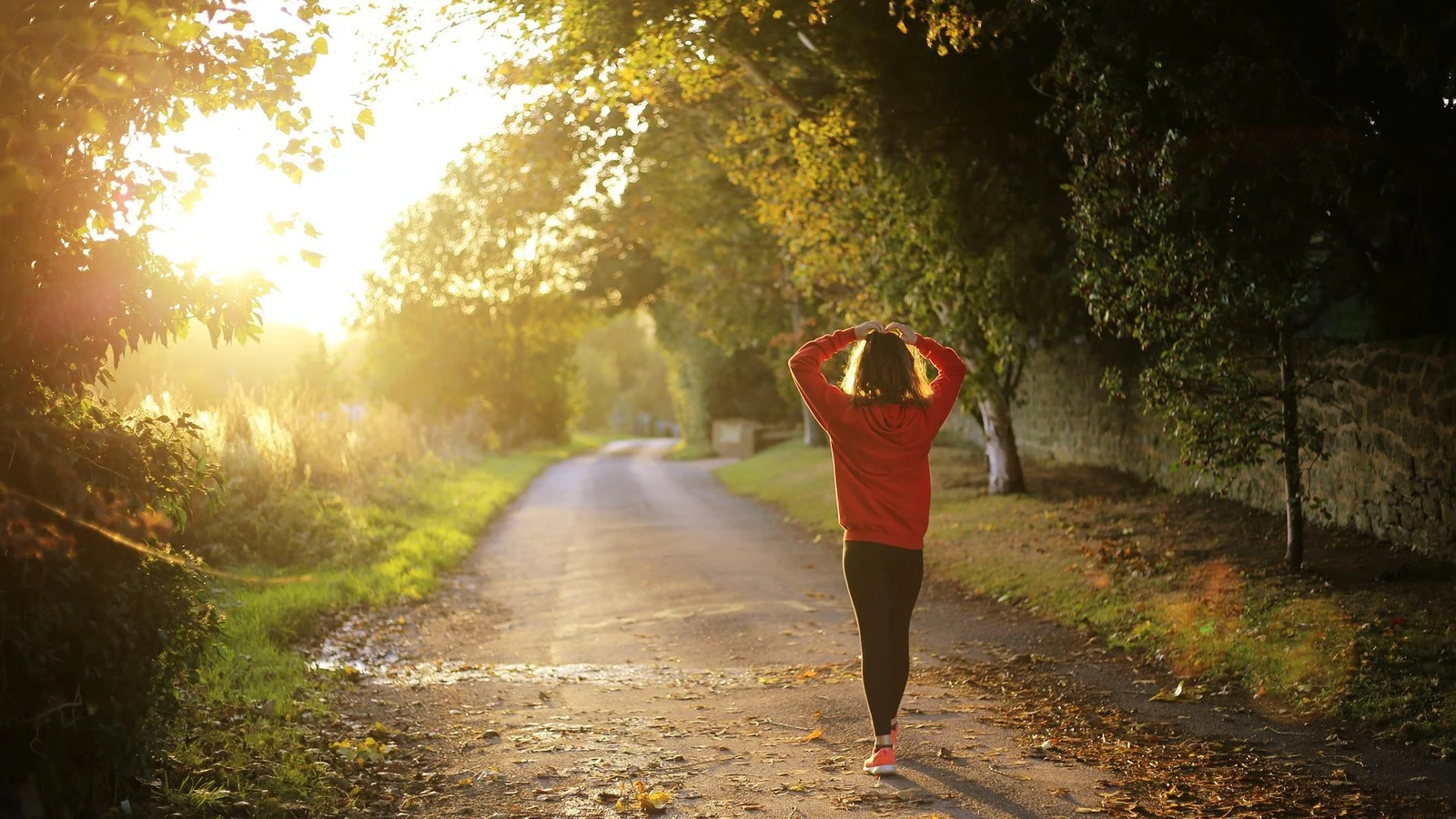
Mindful walking isn’t just about moving your feet; it’s about absorbing what’s around you, focusing on the moment, and feeling each step. This practice can transform a regular walk into a powerful mental clarity tool, highlighting the role of daily walks in reducing anxiety. Individuals can help keep anxiety in check and cultivate a sense of peace by engaging fully with the environment.
Senses
When embracing mindfulness during walks, start by tuning into your senses. Feel the ground beneath your feet, listen to the sounds in your environment, and notice the rhythm of your breath. This conscious awareness creates a mental reprieve and helps bring your thoughts from the past or future back to the present.
Meditation
Guided by the moment, mindful walking is a meditation in motion. By focusing on each step and breath, you can let stressful thoughts drift away. Incorporate deep and slow breathing, allowing yourself to sync with the path and the pace of your walk. Mindfulness during walks not only alleviates anxiety but can also enhance creativity and present-moment awareness. This doesn’t have to be perfect; it’s about progress and finding what feels right for you.
Combining the physical benefits of walking with the mental benefits of mindfulness can bring about a profound shift in how you handle stress and anxiety. Think of mindful walking as a mini-vacation for your mind that you can take any time without any preparation. It’s a simple yet powerful habit that can drastically impact your mindset.
Overcoming Barriers: Making Walking Accessible for Everyone
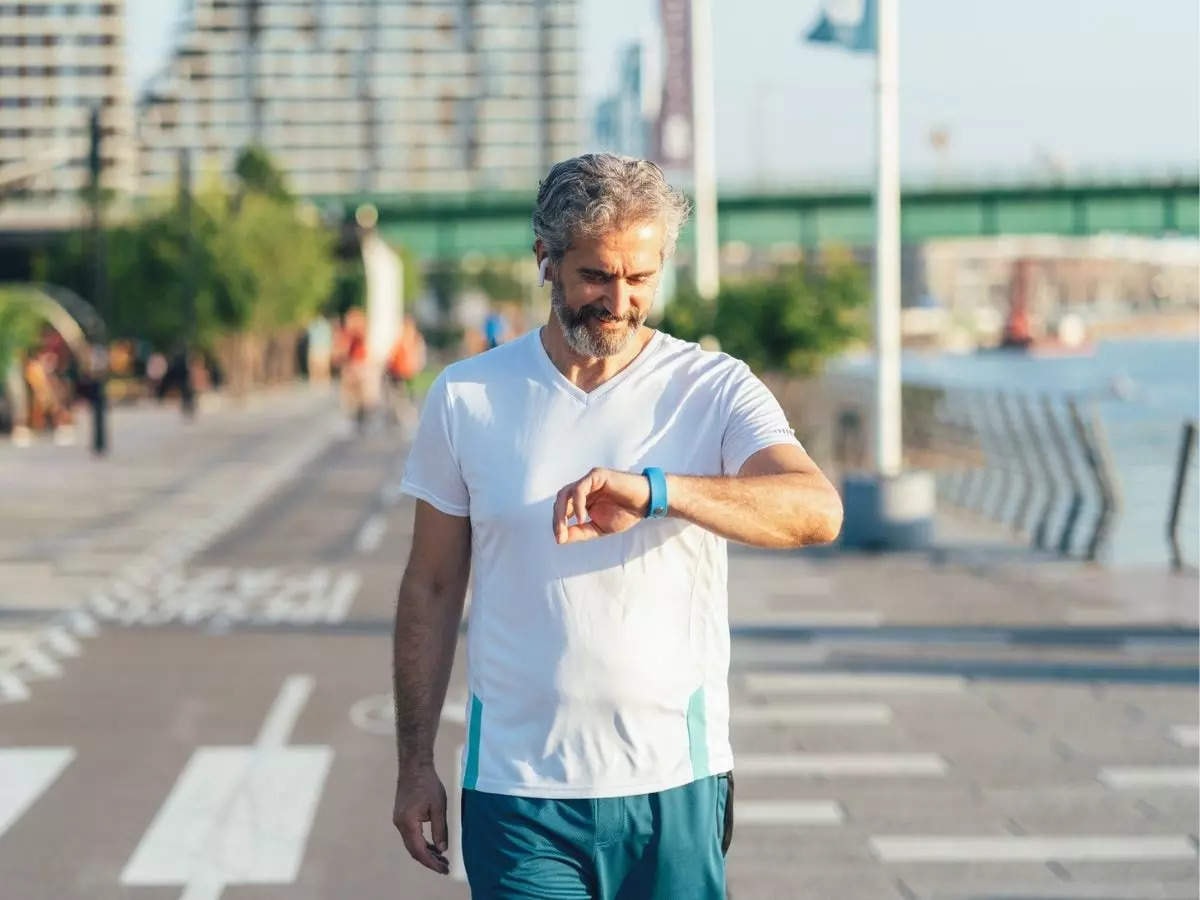
Getting started with regular walking routines can come with hurdles, but it’s all about finding ways to make it work for you. Some people might face health limitations, but there are always workarounds. If long walks are tough, shorter, more frequent strolls can do the trick. The key is to tailor the routine to fit your capabilities.
Environment
The environment can also play a role. Not everyone lives near lush parks or pedestrian-friendly areas. Finding any safe stretch can be enough—a sidewalk, a backyard, or even indoor settings like shopping malls. The idea is to embrace creativity and adaptability to turn walking into a practical habit.
Mobility Challenges
For those with mobility challenges, combining walking with aids like a cane or walker can still provide stress-relieving benefits. Community resources sometimes offer accessible paths or facilities for inclusive walking experiences. There’s also the motivation factor. Partnering with friends, family, or even online walking groups can help to share the journey and keep that motivation high.
Promoting walking initiatives in communities can make it more attainable for everyone. Simple actions, like encouraging local walking events or promoting safe walking routes, can make a huge difference in accessibility. Making walking inclusive is about bringing its benefits to everyone, regardless of their starting point. With creativity and community support, walking can become a universal tool for reducing anxiety and improving mental health, accessible to everyone regardless of barriers or circumstances.
Here’s an additional video about walking for stress relief.
By: Your Mindfulness Coach
Stepping Toward Serenity: Embracing Daily Walks for Anxiety Relief
The role of daily walks in reducing anxiety is not just a concept but a tangible path to improved mental health and well-being. As explored throughout this article, walking offers many benefits beyond physical fitness. By engaging in this simple, accessible activity, individuals can experience a natural reduction in anxiety levels, enhanced mood, and increased mental clarity.
Walking serves as a reset button, allowing us to step away from the chaos of daily life and reconnect with ourselves. The science backing this practice—ranging from endorphin release to improved brain function—highlights the profound impact of each step taken. Real-life success stories further demonstrate that even the smallest commitment to daily walks can significantly improve mental resilience.
As you consider integrating walking into your daily routine, remember that consistency is key. Whether it’s a quick stroll during lunch or a leisurely evening walk, every effort counts. Embrace the process, set achievable goals, and explore the beauty of mindful walking. Ultimately, the journey toward anxiety reduction can begin with a single step, paving the way to a more peaceful, centered existence. So, lace up your shoes and take that first step toward a calmer, more balanced you—your mind will thank you.
FAQS
How Do Daily Walks Help Reduce Anxiety?
Daily walks help reduce anxiety by promoting physical activity, which releases endorphins—natural mood lifters that can enhance happiness and relaxation. Walking also regulates stress hormones like cortisol increases blood flow to the brain, and improves neuroplasticity, all of which contribute to better mood regulation and resilience against stress.
How Long Should I Walk Each Day to See Benefits for Anxiety?
While any amount of walking can be beneficial, aiming for at least 30 minutes of moderate-intensity walking most days of the week is recommended. If you’re just starting, consider breaking it into shorter sessions (e.g., three 10-minute walks) and gradually increasing the duration as you become more comfortable.
Can Walking Alone Effectively Manage Anxiety, or Should It Be Combined With Other Treatments?
Walking can be an effective component of an anxiety management plan, but it is often most beneficial when combined with other treatments, such as therapy or medication. Many individuals find that regular walks enhance their overall well-being and complement other therapeutic strategies, providing a natural way to cope with stress and anxiety.
Revitalize Your Fitness Journey Beyond 55!
Hello, fitness lovers! Discover the secrets to vitality and well-being with Fit After 55! Whether you’re an experienced athlete or just starting out, our platform serves as your comprehensive resource for holistic health. From establishing realistic goals to celebrating achievements, we’re here to assist you in reimagining what it means to thrive after 55. Visit our website and join our Facebook page today to unleash your full potential with Fit After 55!

